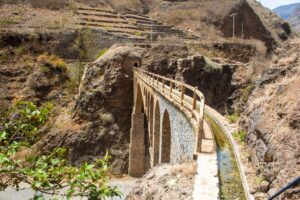
Ponte Canal
Ponte Canal é uma infraestrutura hidráulica, construída no ano de 1956, que alberga na parte superior, uma levada, que faz a travessia da água de
Approved by the Council of Ministers on 20 June 2018, published by Decree-Law nº 44/2018, of 10 July, come into force the day after its publication, the Requalification, Rehabilitation and Accessibility Program – PRRA, (2018 -2020), is a program of the Government of the IX legislature that emerges as a driver of development and economic growth, in all the islands of Cabo Verde through the improvement of the “quality of local governance, spatial planning, the unification of the market through the transport system, the quality of urban and environmental organization of cities and localities that make them attractive places to live, reside, visit and invest”.
ler mais
The areas of intervention:
"The interventions to be carried out within the scope of the PRRA are identified by the municipalities, as well as the definition of their priorities, always having as its main objective the promotion of the rehabilitation of existing housing, contributing to the urban requalification of neighbourhoods and urban centres, regeneration of the historical, cultural and religious heritage, requalification of the seafronts".
In this perspective, eight (8) axes of intervention were defined for the Requalification, Rehabilitation and Accessibility Programme, with the Ministry of Culture and Creative Industries, through the Cultural Heritage Institute, being responsible for the execution of axis IV - Rehabilitation of the Historical, Cultural and Religious Heritage.
Besides the execution and supervision of the rehabilitation works of the Historic, Cultural and Religious Buildings in all national territory, it is also the MCIC's responsibility, through the IPC, to maintenance, protection and safeguard of the rehabilitated heritage.
ler menos

Ponte Canal é uma infraestrutura hidráulica, construída no ano de 1956, que alberga na parte superior, uma levada, que faz a travessia da água de
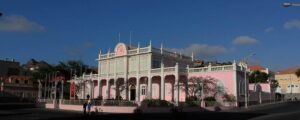
A construção do Palacete do Governo ou Casa do Estado Maior foi realizado por etapas, sendo que de 1858 a 1874 construiu-se o piso térreo.
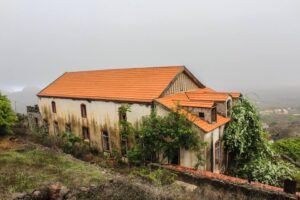
Esta instituição de cariz religiosa, foi construída por volta de 1870 para albergar o cabido, que através da bula do papa Bento XIV se havia transferido
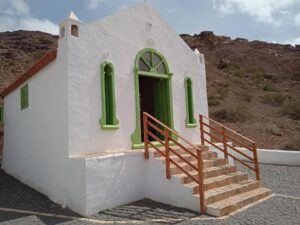
A ermida foi construída por volta de 1822 em honra a Mãe de Deus, tendo substituído uma antiga que datava 1860. Popularmente é conhecida de
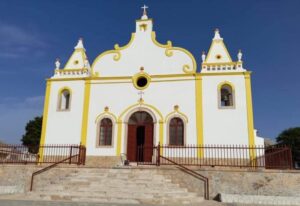
A Igreja também conhecida por Nossa Senhora do Rosário, localiza-se no ponto mais alto da ilha – Monte Penoso
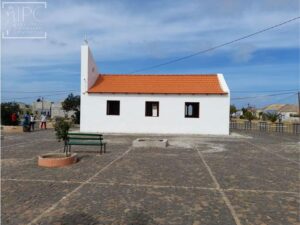
A capela de Morrinho, localizada na ilha no Maio, em Morrinho, é o único edifício religioso católico na região. Além do seu valor patrimonial edificado,
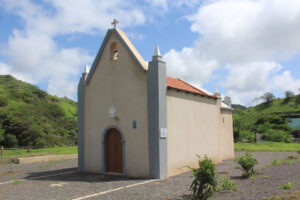
A missa celebrada nesta capela (8 de dezembro) é abnegada à água, uma vez que, coincidia com a época do ano que corria muita água na

It is a centenary chapel that was built in honor of Nossa Senhora do Socorro, whose religious feast is celebrated on 15 August.

A igreja Nha Santa Catarina localiza-se no conselho de Santa Catarina – ilha de Santiago na localidade de Cabeça Carreira, paroquia de Santa Catarina. Encontra-se
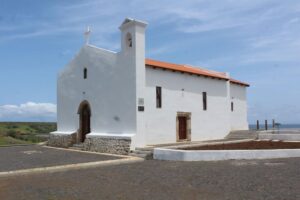
A igreja da N. Sra. da Luz, é uma das mais importantes igrejas que se encontra na ilha de Santiago. Estima-se que a sua construção

A localização das ruínas da Igreja de “Nhô Santiago Maior” está associada a um mito, uma vez que situa numa zona insalubre,
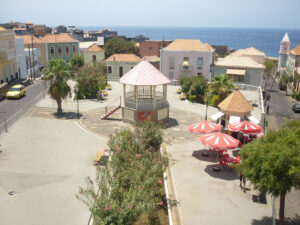
Inaugurada por volta de 1930, foi batizada de Praça João Pais Vasconcelos e denominada Praça 4 de Setembro no pós-independência. Têm no topo o edifício

Situada na Rua da Cultura à entrada da Pé da Rocha, a casa museu inaugurado em 18 de outubro 2006 retrata a vida do insigne poeta, escritor, compositor